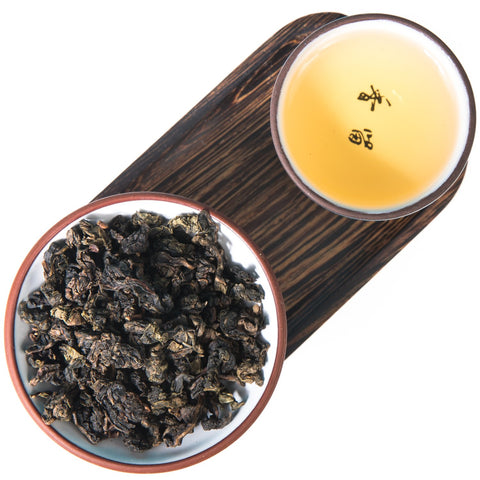It is only when the land is prosperous and peaceful that people can pursue art and culture like tea.
— Emperor Huizhong
In our previous blog post on Tie Guan Yin, we already discussed the brief history and processing method of this delicious oolong tea. Tie Guan Yin remains a worldwide favorite amongst tea enthusiasts. It’s in the top ten of best Chinese teas, top three best Taiwanese teas, and indeed in most if not all best oolong categories! Let’s take a more in-depth look into why this is so.
Briefly On The History Of Tie Guan Yin Oolong Tea
Tieguanyin also goes by the names Iron Goddess of Mercy and Iron Boddhisatva of Mercy. It originated in Anxi, southern Fujian province, during the Qing Dynasty (1644 - 1911). Anxi is an ancient tea production area. Tea farming there dates hundreds of centuries back, and ancient tea trees are often discovered, some being over 1000 years old. These, however, are wild trees showcasing the region’s rich tea history. Nowadays, they are not used for tea production.
In Taiwan, Tie Guan Yin is in the top three most popular teas. One can’t make more than a few steps without finding a TGY vendor. The tea came to Taiwan with the first immigrants from Fujian province who settled in the North of the island, starting tea plantations. TGY, already being a crowd favorite, quickly spread. Nowadays, most tea plantations have moved to the mountainous terrains of central Taiwan. The production of Tie Guan Yin has also changed. We recommend comparing Tie Guan Yin from Anxi and from Taiwan side by side to find your favorite.
How Can We Tell If The Tie Guan Yin Is Good Quality?
While Tie Guan Yin can differ significantly in processing methods and final taste and aroma, there are still a few qualities that should remain the same for any TGY you buy. Tie Guan Yin is known for its robust, heavy leaves. It is not as gentle as many other tea varieties. In fact, the tea leaves are picked in the afternoon so that the tea leaves get more sunlight, unlike most teas that are harvested in the early morning.
Make sure Tie Guan Yin tea leaves are whole and thick. When brewed and unfurled, they often resemble dragonflies.
Taiwanese Tie Guan Yin (Medium Roast)
For Anxi TGY, the color should be vibrant, a mix of green and red. Roasted Taiwanese TGYs are on the darker side, dark red, brownish-green. Yet they still remain vibrant, not gray or dull.
The brew is not too dark, a warming golden color. When sipped, there is a sweet taste that lingers on and doesn’t fade even after multiple brews. No matter the roast level, there is always a noticeable long-lasting orchid scent.
In Anxi and Taiwan, where this tea is prevalent, Tie Guan Yin is a prime choice for dinner pairings. Its robust qualities help to balance some heavier meals, refreshing the palate. Many believe that TGY helps with digestion.
Tie Guan Yin tea tastes exceptional brewed both gong fu style and western style. We particularly recommend using aroma cups for your TGY experience.

